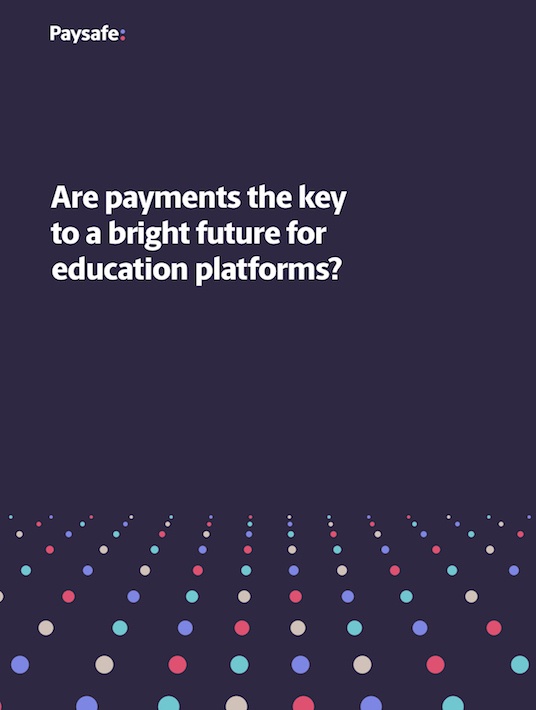How To Benefit From The Changing Education Landscape: What To Ask When Selecting An Education Payment System
Education software and platforms can address many of these challenges facing the broader education space. Nimble and adaptable, they can evolve to address a wide range of education user needs – whether providing solutions to help institutions improve the way they manage their operations, or offering new ways to bring quality education to the masses.

To achieve all of this though, and to support the wider education sector in meeting the challenges it faces, they need to explore ways of enhancing the experience and usability of the app for students and teachers.
The payment options that education management platforms provide are at the core of this. By incorporating the right payment systems into their app or website, a platform can minimize friction in the user experience, enabling content to be accessed quickly and easily, without any excessive barriers.
To achieve this goal, there are a few things that need to be taken into account when selecting an education payment system:
1. How Easy Is It To Incorporate And Navigate?
Education platforms need payment systems that are easy to integrate into their existing website or platform and are straightforward for users to navigate. At the same time, education management platforms need to ensure optimum data security to protect the confidential information of users.
With this in mind, they need to consider payment providers that offer turnkey solutions. These are simple to incorporate and integrate, while also providing a “standard” format that users will be familiar with from other sites and apps, helping to simplify the payment process.
Scalable and flexible payment systems should also be considered. These can be adapted and extended as needed to support a platform as it evolves its scope and grows its business, helping to provide a payment solution that meets their long-term business needs.
2. Can It Offer Installment Plans?
Education management platforms that provide high-value services should consider whether their selected payment provider offers an option to allow users to pay in installments. So-called “pay later” solutions provide a platform—and its education clients—with the full payment straight away, supporting their business’s cash flow, all while enabling end-users to pay the payment provider at their own pace. Even for eLearning—which typically provides a more cost-effective learning experience—this could be beneficial, providing a means for cash-strapped students to access study material while spreading the cost.
3. Can International Payments Be Made On It?
If an education management platform is delivering services to students around the world, or created to provide a solution to enable cashless, remote payment for studies, it is imperative for them to find a payment partner that specializes in enabling secure cross-border eCommerce.
Platforms should consider whether the provider offers a broad range of global payment solutions with the scope to process payments in multiple currencies. Providers with specialist fraud and risk management tools can help take the stress out of processing international payments, providing platforms with reassurance that their finances are safe.
Those with knowledge of the local payments landscape in a range of territories can provide additional support to help eLearning platforms tailor their offering for target markets.
4. Does It Offer A Comprehensive Range Of Payment Methods?
The ability to process cross-border transactions isn’t the only factor that all education platforms—whatever the service they offer—need to bear in mind if they want to offer services internationally and expand into new overseas markets. They need to make sure their payment systems are able to meet local payment needs across every target territory.
They should look for partners that are able to process the widest possible range of payment methods and consider whether their providers are able to offer not just card payment processing, but also handle payments via direct bank transfer, or from consumer wallets, digital currencies and other alternative payment methods as well. They also need to be able to process payments across any local currency to handle transactions across multiple markets.
In doing so, they can be sure that their platform is able to provide easy, frictionless access for users no matter where they are based or what payment method they prefer to use, meeting local and global payment needs. For the platform itself, having a single partner capable of providing multiple payment options helps to simplify their supply chain, saving considerable time and resource.
5. Does It Offer Extra, Value-Added Support?
Finally, education management platforms should look at the extra services offered by their payment partners. Those that offer additional support in other areas can add significant value to a platform, helping them optimize their business processes and further enhance the service they deliver to users.
There are many areas where payment partners can add value. Providers that offer dedicated integration support, for example, can help platforms incorporate new payment systems into their services seamlessly and efficiently. Meanwhile, those that provide “tokenization”—a feature that allows users to store their payment data on a platform for future or recurring transactions—can support education management platforms in further streamlining the user experience and optimizing user retention rates.
Many providers also offer data on how their users access or pay for their services, providing vital strategic insight that can feed into marketing and sales enablement. In addition, providers that offer flexibility in terms of product and feature needs can support platforms in customizing their payment systems to meet the specific requirements of both their customers and their business.
Education management platforms should also explore the customer service offered by their partners. Personalized, one-on-one support can be key to helping them enhance the payments process on their app or website, so they continue to offer users a great service.
If you want to learn more about how integrating payments will allow you to scale and drive even more users, download the eBook Are Payments The Key To A Bright Future For Education Platforms?









